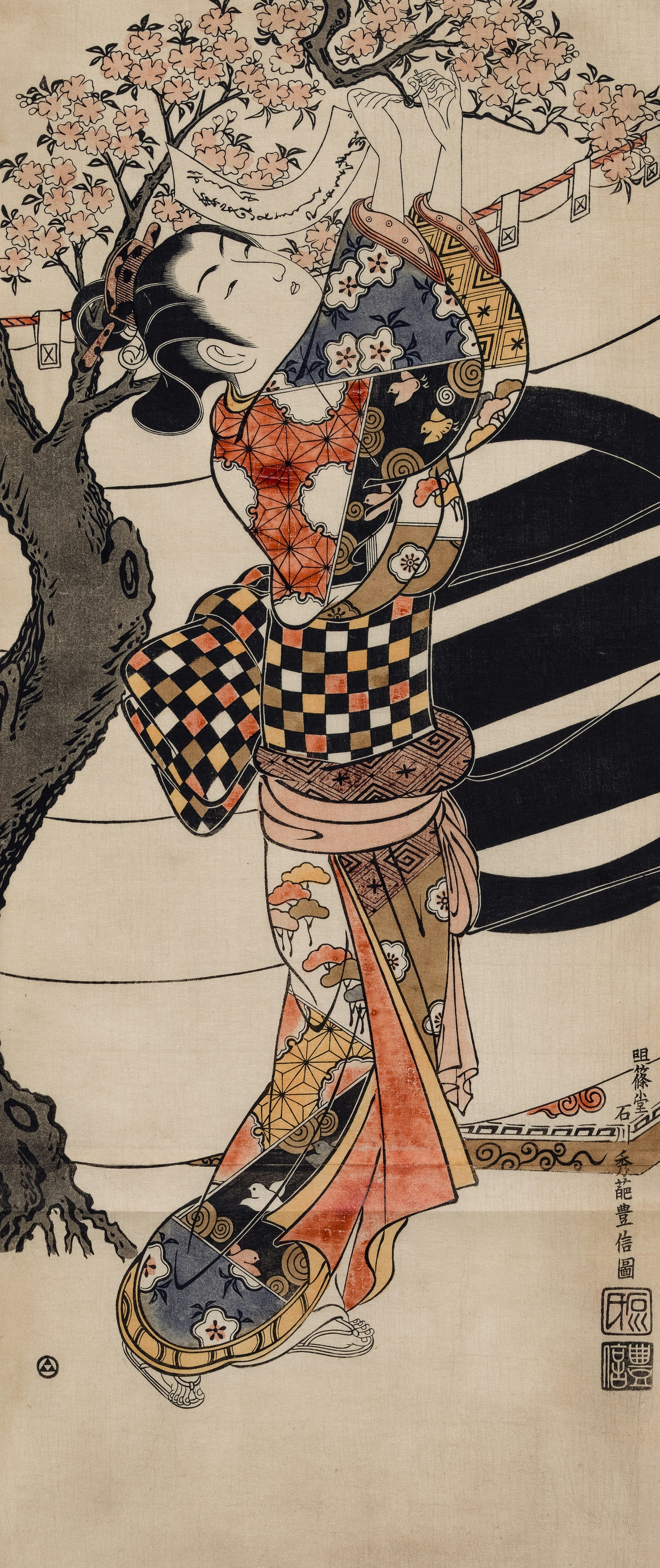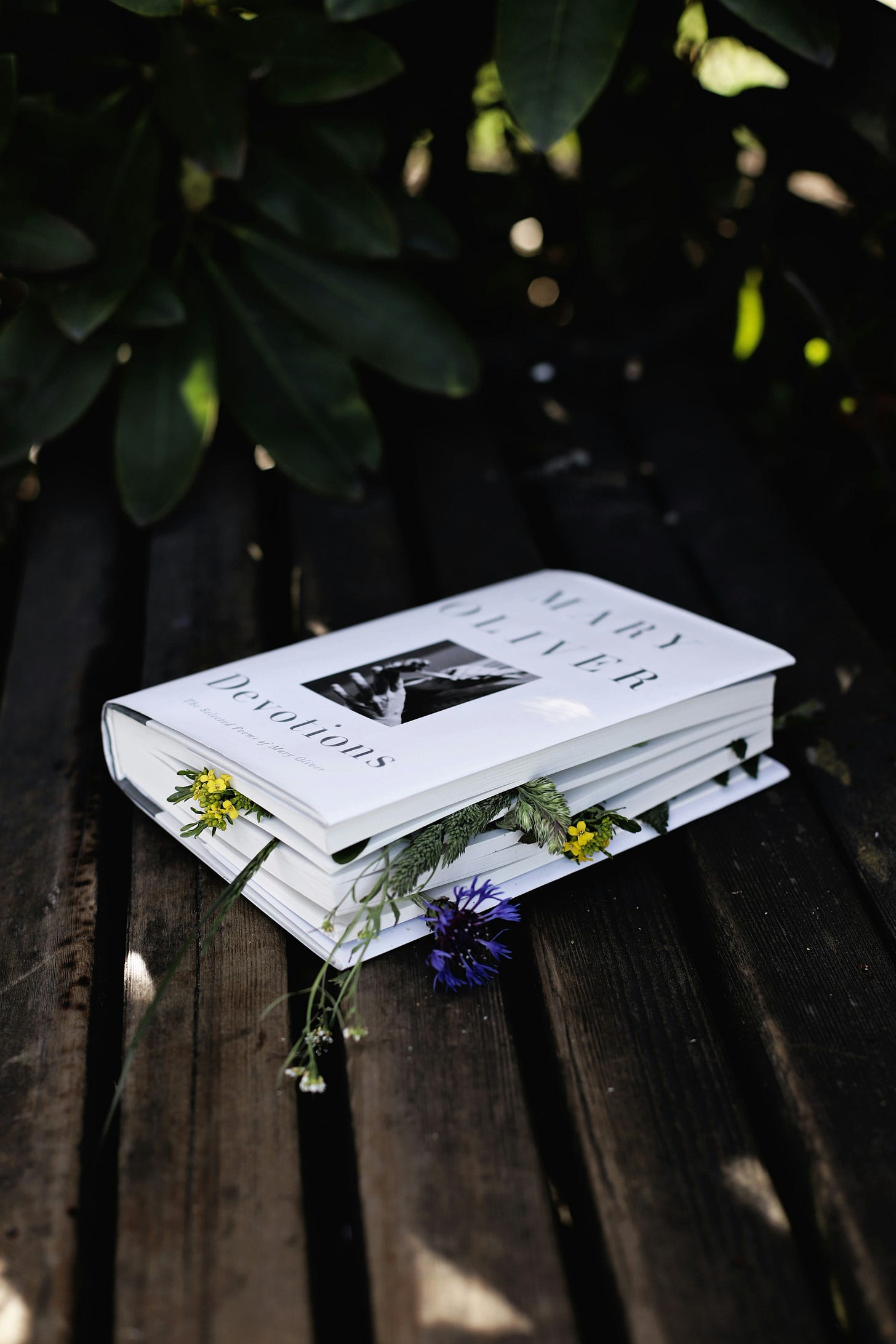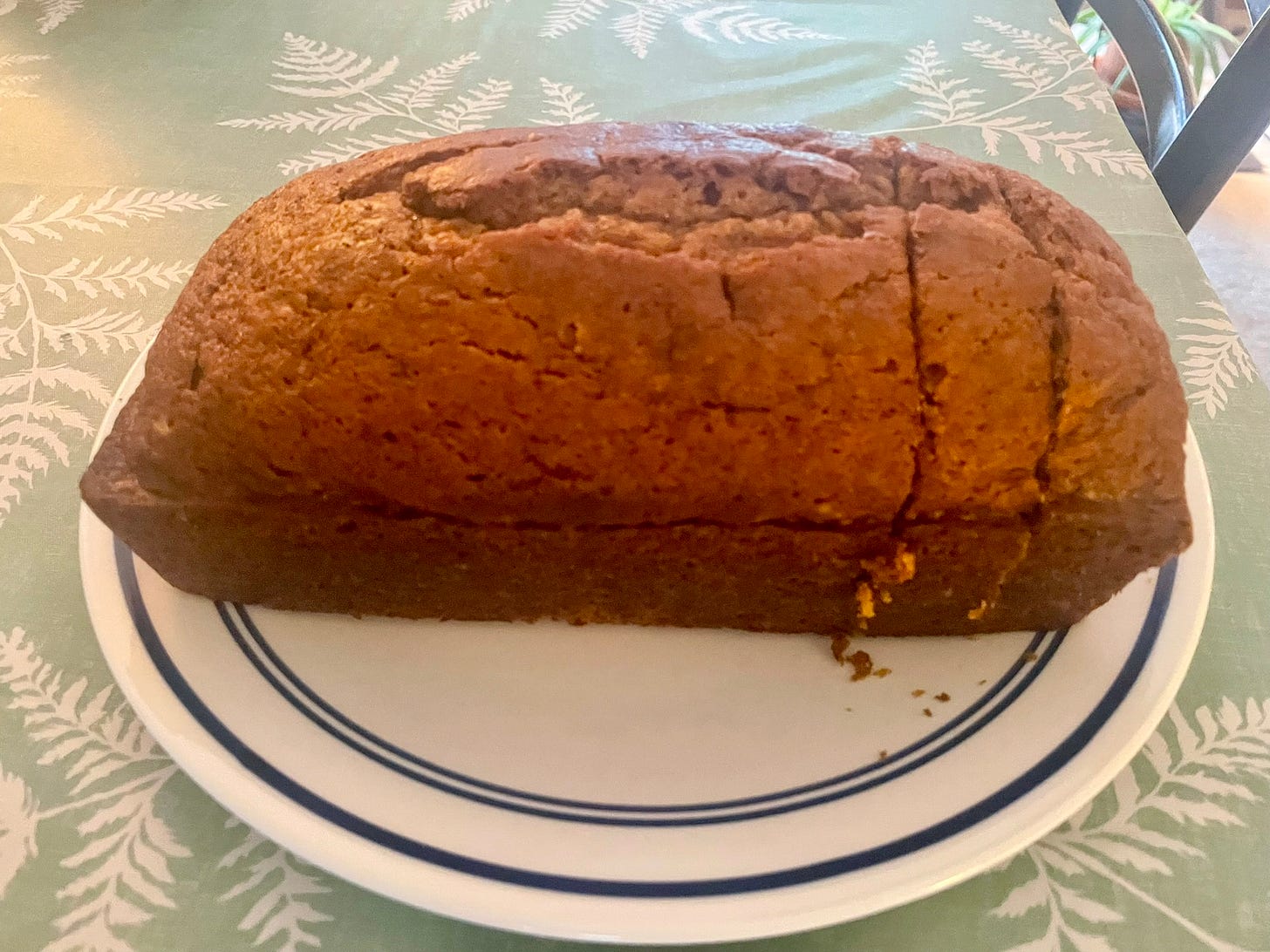Today’s post invites us to think together about how we channel our creative energies to live a good life.
For the summer months, Muse of Fire will publish two posts a month. I’d love it if you would share the post with someone who might enjoy it, so that the newsletter reaches new folks and kindred spirits.
The art of living
The calendar tells us that the year starts in January, but June feels like a fresh start. Bright mornings and lingering twilights—the days stretch out, and it brings a certain spaciousness to our days and our selves.
There are plans to make, people to see, but on this warm Tuesday in the mountains, I just want to stretch out like a cat in the sun, and listen to the birds and the ambient whirrs of wind, tires, fans. As Hammerstein wrote, “June is bustin’ out all over.” It’s a time for doing and for just being as well.

It’s the spaciousness and sense of possibility that leads me to ponder…
What does it mean to live a good life?
Is it about what you achieve, create, or consume? Is it more about the how than the what: a disposition or attitude, a perspective or ethic? Is it about what you give, whom you help, or what you restore?
This question of how to live well lies at the heart of most philosophical traditions. The Epicureans, from their Athenian garden collective, sought pleasure of the mind and body through moderation, intellectual inquiry, and community; the Stoics pursued virtue in the public sphere. Buddhism teaches compassion and equanimity.
In the European Middle Ages, there was a practice known as ars vivendi, the art (or craft) of living. The ars vivendi was conceptually intertwined with the ars moriendi, or art of dying, so that it was impossible to talk about living a good life without acknowledging life’s own limitedness. In life, we’re mindful that our days are numbered, and this mindfulness informs our decisions.
While the ars moriendi was fundamentally homiletic (a resource for pastoral care of the soul), both the ars moriendi and ars vivendi have a more practical and social context. The ars vivendi helped teach people how to perform daily tasks, master crafts, or deepen their devotional practice. All these went into living a good life.
What would an ars vivendi look like today? There are plenty of self-help books out there, books on productivity and time management, on career growth and career changes, on optimizing work or optimizing recreation. Make the most of life! YOLO! Have the best time ever! Am I the only person that gets a wave of panic when I hear those marketing taglines?
For some people, such inquiry leads to list-making: listing goals, accomplishments, bucket lists, and so on.

You can’t really quantify what it means to live well, though, especially as you’re in the midst of living. There aren’t really metrics—just moments.
And while I’d love to master the “art of living”—whatever that looks like!—the difference between theory (how to live) and practice (how I live) feels huge.
What follows are some reflections on what’s helped me live a little better: Day 1, ars vivendi.
We curate our lives (from Latin cura, “care”) in many areas: work, community, friendships, family, environment. Each of these deserves its own conversation.
Many people see meaningful work as the linchpin of a good life, but some would argue that this is a fallacy. Anne Helen Peterson argues that “passion jobs” are often “industrial burnout machines,” while Erin A. Check writes that an antidote to the culture of overwork is to diversify one’s “meaning-making portfolio” beyond professional ventures. And “hobbies” are a part of that.
Today I want to write about creative practice, which sometimes takes the form of the humble “hobby,” or a daily chore transformed into a craft, or a quirky interest, or an ongoing and profound project, like caregiving.
A question I come back to often is how to enfold creative pursuits into everyday life. Whether you channel your creative energies towards writing, or playing an instrument, or designing a welcoming home, or engaging the imagination of a preschooler, you probably find yourself improvising and negotiating every day. How to spend your time. How to prioritize your tasks. How to make your art.

Lyricism, attention, bioregionalism
I always wanted to be a poet; one of my childhood career aspirations was to “make books with friends.” I started “Muse of Fire” as a way to revive and share that creative practice.
Earlier this year, I began a more regular practice of writing poetry. It was early spring, and I began by simply listing the various things—expected and unexpected—that I saw in the local nature park on my daily walks. Mayapples spreading out across the forest floor. Rhinestone-encrusted acrylic nails. Broken birthday balloons. My list became a kind of collage of the unfolding spring, with formal experimentation and a willingness to be present in the mundane.
You have to build your creative practice on the scaffolding of everyday life.
Writerly habits—or any creative practice—creates space for attention. There was visual interest in my park walks: I noticed shades, shapes, and forms. Strawberries along the path, a turtle, other walkers. That attention was refocused from administrative tasks that required me to plan or work—things that might cause worry or anticipation. A creative practice has the potential to enrich your life and heals you in ways you didn’t expect—to be part of what Cech calls a “meaning-making portfolio.”
Jenny Odell in How to Do Nothing writes about the importance of “learn[ing] to wield attention in a more intentional way” (xi) as an antidote to the accelerative (and toxic) drive to greater productivity, which reduces time to capitalist production. She urges readers to embrace what you have, where you are.
“We still recognize that much of what gives one’s life meaning stems from accidents, interruptions, and serendipitous encounters: the ‘off time’ that a mechanistic view of experience seeks to eliminate.” Jenny Odell, How to Do Nothing, ix
Wendell Berry’s poem, entitled “How To Be a Poet,” takes a similar stance in emphasizing the power of attention. For Berry, poetry emerges from the practice active listening within the environment. He identifies this attention to the ambient ecology and bioregionalism as the foundation of creative work.
Art emerges from a sense of place—the materiality of breathing air, the perception of light scattered behind clouds, the quiet pauses between birdcalls.
Accept what comes from silence.
Make the best you can of it.
Of the little words that come
out of the silence, like prayers
prayed back to the one who prays,
make a poem that does not disturb
the silence from which it came.
— Wendell Berry, “How To Be a Poet”
Lyric is part of the acoustics that it emerges from. There’s a circularity between what we experience in the world and what we give back to it. It’s ultimately a sustainable process for both poet and place.

The creative practice of everyday life
I wish I could give you a playbook for living a creative life, a manual of ars vivendi. I’m still “living the questions now,” to borrow Rilke’s phrase. But I can share what has resonated with me for these past months.
It’s not just about how you present something to the world; it’s about how you integrate thinking about a project into your life. How you make time for your creative self. How you value this thing that you’re making enough to get good at all kinds of aspects of it.
You don’t even have to be a writer! There can be any kind of passion you have that you are insistently pursuing. But, of course, mostly what I want for all of you, for me, for any of us, is to simply write.
Jami Attenberg, “Decide to Write,” Craft Talk
I hope that, as the summer months begin, you experience moments of curiosity, imaginative energy, and creative fulfillment.
Now is enough.
I always imagined myself sitting on the balcony of a Parisian apartment, the smell of a boulangerie wafting up, as I filled notebooks with sparkling prose. This was the life of a writer, la vie bohème.
I am not in Paris. There is no boulangerie, and suburban West Virginia is far from most people’s idea of la vie bohème.
One of the insights that I’ve gained with age is that everything you need, you probably already have. There is no future ideal state where life, work, art, health, or family obligations will align into a perfect planetary quintile to allow you to magically begin your best life. You just kind of show up—perhaps confident and energized, or perhaps tentative and awkward, like a shy wallflower at a dinner party, but you show up.
Just pay attention to what’s in front of you. Write from the clutter at the edge of your desk, write the trip to drop your kid off at summer camp, write the foggy morning with the call of a mourning dove or the breakfast you burnt.
“A simple refusal motivates my argument: refusal to believe that the present time and place, and the people who are here with us, are somehow not enough.” Jenny Odell, How to Do Nothing, xi
Do more of what you love.
Mandy Brown writes that “energy makes time”—rather than looking at your creative endeavors as costing you time, think of doing these energizing projects as giving you back your time.
“The question to ask…isn’t ‘how do I make time for this?’ The answer to that question always disappoints, because that view of time has it forever speeding away from you. The better question is, how does doing what I need make time for everything else?” — Mandy Brown, “Energy makes time”
Dance with the things that matter.
You can’t do it all at once. And you don’t need to.
It makes total sense that when you’re enthusiastic about a project or a new skill you’re learning that you want to take it all on—along with everything else on your plate. That is, until, the math doesn’t math. And that’s when the hard decisions start.
Ask me for one area where I could stand to grow the most, and I will tell you: confident and efficient decision-making. And yet this is crucial to both creative work and to life more generally.
Oliver Burkeman, in Four Thousand Weeks: Time Management for Mortals, writes that you have to accept “the limit-embracing life”—that you will have to make conscious decisions about what you simply can’t do or experience. The freedom gained from this acceptance will make the things you do choose—relationships, career journeys, travels—more meaningful, since you won’t be focused on either “keeping all doors open” or regretful of roads not taken.
On the “paradox of limitation”: “the more you try to manage your time with the goal of achieving a feeling of total control, and the freedom from the inevitable constraints of being human, the more stressful, empty, and frustrating life gets. But the more you confront the facts of finitude instead—and work with them, rather than against them—the more productive, meaningful, and joyful life becomes.” — Oliver Burkeman, Four Thousand Weeks, p. 32
One strategy I’ve found helpful in establishing a sane workflow (described by Burkeman and many others) is to establish a pull-based kanban system. It’s regularly used in agile product delivery in tech and has been absorbed into the productivity space as well. The basic premise is that you visualize your workflow and you limit work in progress, so that you don’t start a new task until you’ve finished another one.
Rest
Rest takes many forms. Napping. Chatting with old friends. Baking scones for a tea. Dancing around in your PJs to Chaka Khan.
Relish rest as a necessary good and a radical act, a ruthless renewal and form of anti-capitalist resistance.
Share your practice.
I’m the sort of writer who gains clarity from conversations about ideas and work. I’m excited to work with academic writers (through a freelance coaching consultancy) who similarly benefit from the chance to talk through their research.
Quick anecdote: When I was in college, I took beginner pedal harp lessons. I was drawn to the incredible presence and acoustics of the instrument. It made sense that at the time I was a pre-med student, since the harp has classical (and, indeed, contemporary) associations with healing.
We had a Christmastime recital in the college chapel, and my part was to play the iconic four notes of “Choir of the Bells” as the other, more advanced students played the rest of the piece. Several of my friends came to hear me play those four notes—over and over and over.
That meant a lot to me: even as a beginner, harp music was something I could share. Find folks who can show up for your first few notes. Find ways to share what you’re creating, with radical honesty, and radical grace.
Be bold, and be curious.
Some of the best career advice I’ve received has been to proceed with boldness and curiosity. You can also bring that ethos to creative work. And I’ll add one more piece of advice my mom once gave me: “Ten seconds of courage makes all the difference.”
While writing my last post on cookbooks, I learned that the very first edition of Joy of Cooking was self-published. So was Rick Steve’s Europe Through the Back Door. A little boldness, my friends, can go a long way.
I’d love to hear what’s worked for you! You can share any insights, posts, or resources you’ve found meaningful on the topic of creative work, life, and balance below.
Whether you’re enjoying the jacaranda blooms in California’s “June Gloom” or the verdant greens of the Blue Ridge, I hope the season brings with it, for you, a feeling of renewal and possibility.
What I’m enjoying:
I found Jami Attenberg’s Craft Talk just in time to sign up for the #1000wordsofsummer collective. Each day I look forward to reading the posts, which are gorgeous and moving.
Layla Khoury-Hanold is an incredibly talented food writer and memoirist. Her most recent post on Words with Layla, entitled “Building a Life” explores a lot of the same questions I’ve reflected on here.
Mary Flannery’s Page by Page offers thoughtful, witty, and humane advice for academic writers, and I’ve been leaning into her Writing Camp: Finisher’s Edition posts to inspire me to *actually finish* several projects this summer.
Clare Egan’s “Writing is Always Beginning Again” from Beyond Survival offers moving reflections on the desire to have written more, and how to move beyond those thoughts.
I just discovered the lovely On Being project dedicated to poetry, conversation, and ecology. The project’s contributors aim to “tend human wholeness — the life of the mind, the truth of the body, the wild mystery of the human spirit, and our need for each other.”
Recipes:
Yasmin Fahr’s Mediterranean Nachos, as shared with Lukas Volger
Christina Lane’s Pumpkin Bread
Further Reading:
Oliver Burkeman, Four Thousand Weeks: Time Management for Mortals (2021)
Arthur C. Brook’s “How to Live a Life” column at the Atlantic comes to mind as one example of broadly “self-help” pieces that holistically tackle the questions I’ve explored in this post.
Mandy Brown, “Energy makes time,” everything changes blog, August 4, 2023. https://everythingchanges.us/blog/energy-makes-time/
Erin Cech, The Trouble with Passion: How Searching for Fulfillment at Work Fosters Inequality (2021)
Anne Helen Petersen, “When Your Profession is on Fire: On Industrial Burnout Machines”
Anne Helen Petersen, “The Trouble with Passion: Erin A. Cech on ‘choicewashing,’ the passionate applicant, and radically reconsidering career advice.”
Jenny Odell, How to Do Nothing: Resisting the Attention Economy (2019)
Jim Benson and Tonianne DeMaria, Personal Kanban: Mapping Work | Navigating Life (2011), helpfully summarized by Curtis McHale.









